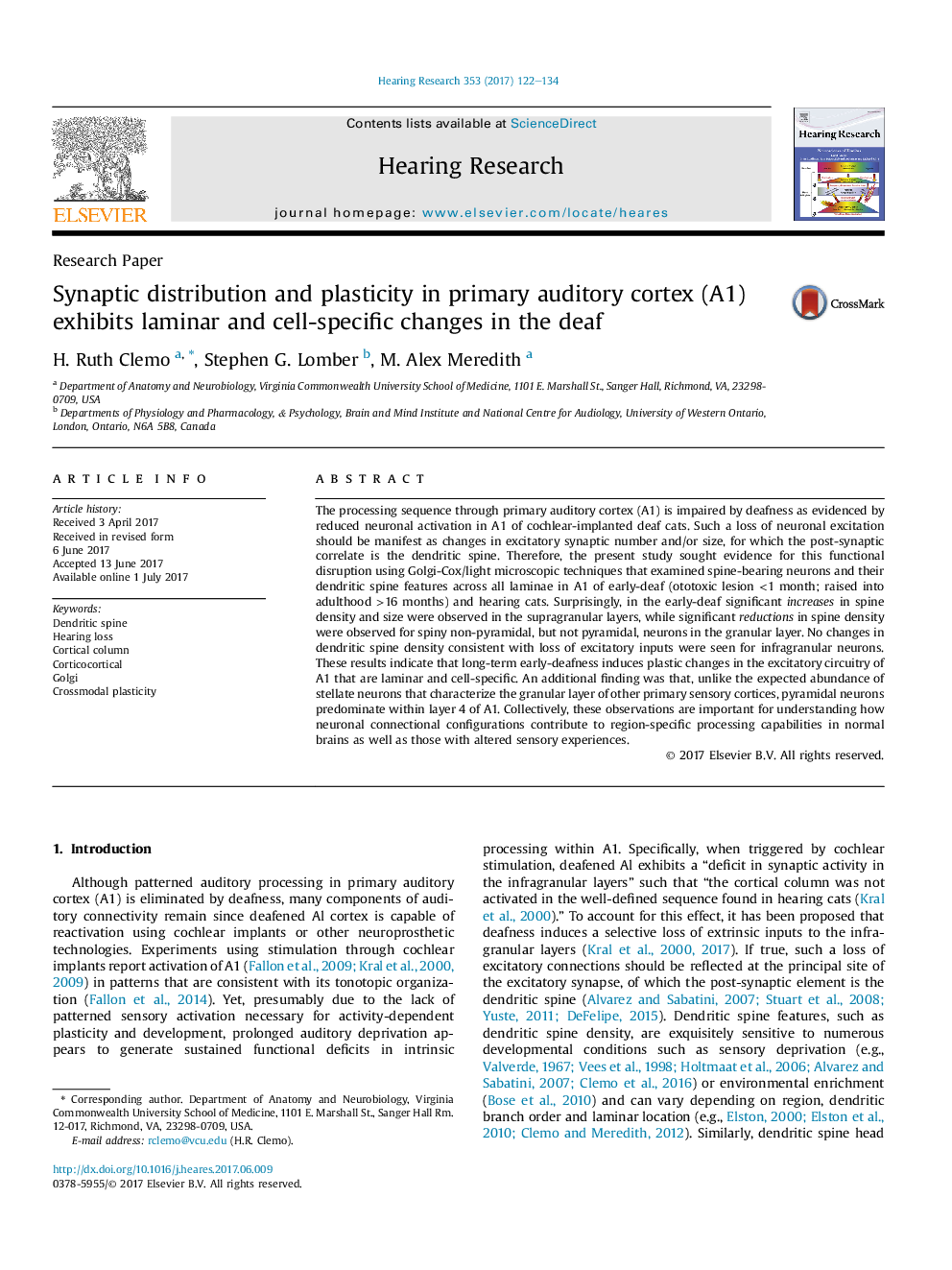| Article ID | Journal | Published Year | Pages | File Type |
|---|---|---|---|---|
| 5739338 | Hearing Research | 2017 | 13 Pages |
â¢A1 exhibits two types of spine-bearing neurons: pyramidal and spiny non-pyramidal.â¢Early-deafness increased spine density and size in supragranular layer.â¢Early-deafness decreased spine density of granular spiny non-pyramidal neurons.â¢Early-deafness did not change dendritic spine density of infragranular neurons.â¢Deafness affects excitatory synapses in A1 at both laminar and cell-specific levels.
The processing sequence through primary auditory cortex (A1) is impaired by deafness as evidenced by reduced neuronal activation in A1 of cochlear-implanted deaf cats. Such a loss of neuronal excitation should be manifest as changes in excitatory synaptic number and/or size, for which the post-synaptic correlate is the dendritic spine. Therefore, the present study sought evidence for this functional disruption using Golgi-Cox/light microscopic techniques that examined spine-bearing neurons and their dendritic spine features across all laminae in A1 of early-deaf (ototoxic lesion <1 month; raised into adulthood >16 months) and hearing cats. Surprisingly, in the early-deaf significant increases in spine density and size were observed in the supragranular layers, while significant reductions in spine density were observed for spiny non-pyramidal, but not pyramidal, neurons in the granular layer. No changes in dendritic spine density consistent with loss of excitatory inputs were seen for infragranular neurons. These results indicate that long-term early-deafness induces plastic changes in the excitatory circuitry of A1 that are laminar and cell-specific. An additional finding was that, unlike the expected abundance of stellate neurons that characterize the granular layer of other primary sensory cortices, pyramidal neurons predominate within layer 4 of A1. Collectively, these observations are important for understanding how neuronal connectional configurations contribute to region-specific processing capabilities in normal brains as well as those with altered sensory experiences.
Graphical abstractDownload high-res image (176KB)Download full-size image
